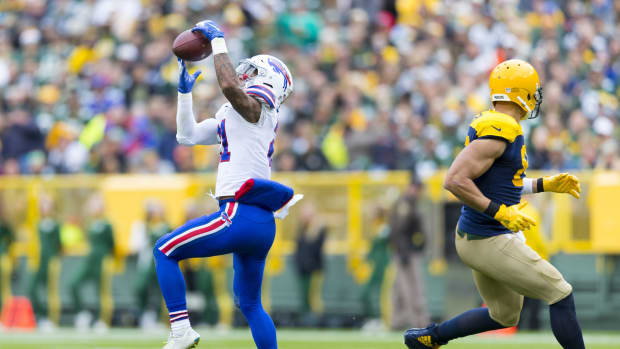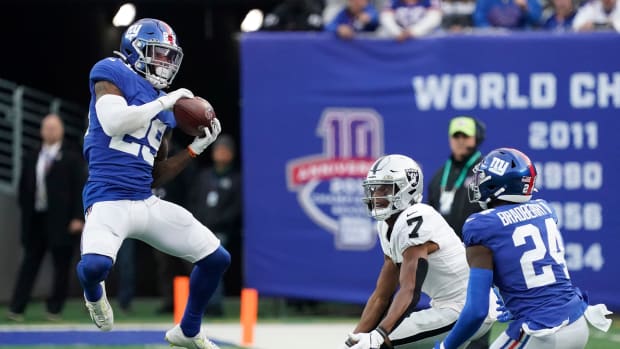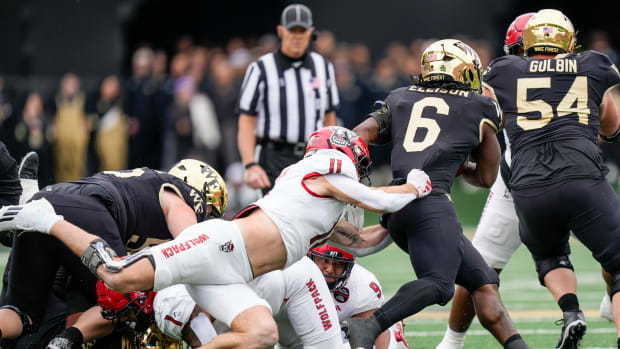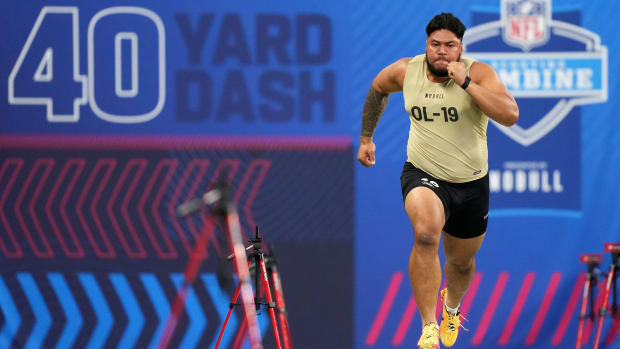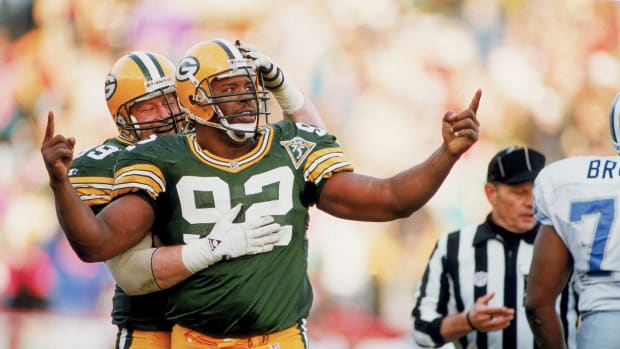Why Greatest Running Back in NCAA History Might Not Be Best Running Back in Draft
INDIANAPOLIS – Jonathan Taylor called Herschel Walker the “gold standard” among college running backs.
In reality, the new gold standard might be Taylor. Taylor’s 6,174 rushing yards at Wisconsin is the most ever for a running back in his first three season. That obliterated the previous record of 5,596 yards set by Walker while at Georgia in the early 1980s.
Taylor, however, isn’t even the clear-cut top running back in this draft class. NFL.com’s Bucky Brooks ranked him No. 5. The Athletic’s Dane Brugler ranked him No. 3, as did NFL.com’s Daniel Jeremiah and Pro Football Focus.
The questions are obvious as his jaw-dropping production.
YOUR INTRODUCTION TO 30 RUNNING BACKS AND 325 DRAFT PROSPECTS
First, it’s fumbles. He had 18 in three seasons. While Taylor had a heavier workload than every back in the draft class, it doesn’t account for the dramatic difference between himself and Georgia’s D’Andre Swift (seven fumbles in three seasons), Utah’s Zack Moss (six in four seasons) and Ohio State’s J.K. Dobbins (five in three seasons). Taylor had eight as a freshman, four as a sophomore and six as a junior, so it’s a problem he never quite got a handle on during his prolific career.
Video: Bill and Bill talk Packers draft needs
“Freshman year was not my best year with that,” Taylor said on Wednesday at the Scouting Combine. “Cleaned it up sophomore year a bit; you still want to eliminate those. Going into junior year, I had a couple mishaps. Some with the wildcat with me and Aron Cruickshank, had one with Nebraska where the ball was a bit behind, caught it one-hand, defender on the hip, tried to bring it in. You never want those kinds of mishaps to happen but as far as those fumbles when you’re in traffic, trying to fight for extra yards, that’s when you have to be technically sound.”
Second, it’s workload. While some running backs are tougher and more durable than others, there’s only so many hits a player can withstand. In three seasons, Taylor had 926 rushes and 42 receptions for 970 total touches. Taylor saluted Ross Kolodziej, Wisconsin’s strength and conditioning coach, for keeping him up and running.
“Those guys did a great job of giving you the knowledge of what you need to do to prepare your body as well as putting you in position to prepare your body for the workload of the season,” Taylor said. “So, I really think that’s kudos for giving guys the knowledge for recovery. Things you need to do before a game, after a game, in the offseason to prepare you for that workload.”
Third, in today’s spread-the-field NFL, running backs who can catch the ball create matchup problems. Taylor caught 42 passes in his three seasons; Moss caught 73, Dobbins caught 71 and Moss had seasons of 29 and 28. However, Taylor caught 26 passes and scored five touchdowns in 2019.
“One of the biggest things is being effective on third down,” Taylor said of what he needs to show scouts. “A lot of guys think Wisconsin football is power football and outside zone schemes, which it is. Coach (Paul) Chryst did a great job of making an emphasis point to put me in space to be able to showcase that ability.”
What Taylor has is an unparalleled combination of intelligence, durability, vision and speed. Taylor chose Wisconsin in part because of its academics, and his passions range from philosophy to astrophysics. He seemed impervious pain and practically indestructible, even while wearing a bull’s-eye in the physical Big Ten. If there was a hole, he found it. And when he got in the open field, he was gone.
Taylor, a 100-meter state champion while in high school in New Jersey, hopes to run a 40-yard time in the 4.4s this week. Somehow, some draft analysts have dinged Taylor for a lack of speed.
“I really don’t feel disrespected,” Taylor said. “On film, usually when a bigger guy is fast, it kind of looks like he’s really smooth and it doesn’t look like he’s moving as fast, which makes sense. But you look at the film and I’m running away from people.”
Finally, Taylor sees his consistency as the ultimate feather in his cap. He rushed for 1,977 yards and a 6.6-yard average as a freshman, 2,194 yards and a 7.1 average as a sophomore and 2,003 yards and a 6.3 yards average as a junior. He never had back-to-back games of less than 110 rushing yards in his career.
“If you look at the next level, what separates the great backs from the elite backs is really them playing on an elite level day in and day out every Sunday,” Taylor said. “I think that’s one of the biggest things that separates me is my ability to be consistent year in and year out.”
